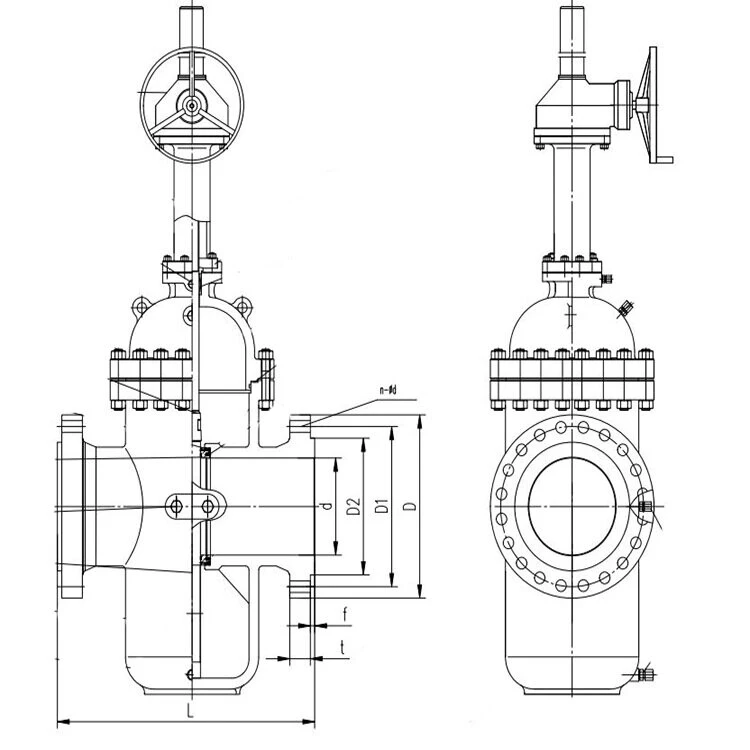Optimal Sealing Material Selection for Flat Gate Valves
Flat gate valves are pivotal for fluid control across industries, relying on robust sealing surfaces to ensure operational integrity. This article explores key considerations for choosing sealing materials of flat gate valve, encompassing corrosion, abrasion, and erosion resistance, along with stability under high temperatures, in pursuit of optimized valve performance.

1. Corrosion Resistance
Corrosion, the process by which the sealing surface deteriorates under the influence of the medium, poses a significant challenge. Thus, the sealing surface material must exhibit excellent corrosion resistance, which is primarily determined by the material composition and chemical stability. This property is particularly crucial in applications such as oilfield and natural gas valves.
2. Abrasion Resistance
During relative motion, the sealing surface may experience abrasion, leading to a decline in sealing performance. This is especially critical for parallel gate valves, where good abrasion resistance is paramount. The material's resistance to abrasion is often determined by its internal properties.
3. Erosion Resistance
Erosion, the process by which the sealing surface is damaged as a result of high-speed fluid flow, is a common occurrence, especially in throttling valves and safety valves operating under high temperatures and pressures. Therefore, erosion resistance is another essential consideration for sealing surface materials.
4. Hardness and Temperature Stability
The material should possess suitable hardness, and its hardness should not significantly decrease at specified operating temperatures. For instance, stainless steel flat gate valves require this characteristic.
5. Coefficient of Linear Expansion Matching
This is particularly critical for structures with embedded sealing rings to prevent additional stress and loosening at high temperatures. Thus, the coefficient of linear expansion of the sealing surface material should approximate that of the body material.
6. Stability in High-Temperature Conditions
For equipment operating under high-temperature conditions, materials must exhibit sufficient oxidation resistance, thermal fatigue resistance, and resistance to thermal cycling. This is especially relevant for high-pressure flat gate valves.
Corrosion, the process by which the sealing surface deteriorates under the influence of the medium, poses a significant challenge. Thus, the sealing surface material must exhibit excellent corrosion resistance, which is primarily determined by the material composition and chemical stability. This property is particularly crucial in applications such as oilfield and natural gas valves.
2. Abrasion Resistance
During relative motion, the sealing surface may experience abrasion, leading to a decline in sealing performance. This is especially critical for parallel gate valves, where good abrasion resistance is paramount. The material's resistance to abrasion is often determined by its internal properties.
3. Erosion Resistance
Erosion, the process by which the sealing surface is damaged as a result of high-speed fluid flow, is a common occurrence, especially in throttling valves and safety valves operating under high temperatures and pressures. Therefore, erosion resistance is another essential consideration for sealing surface materials.
4. Hardness and Temperature Stability
The material should possess suitable hardness, and its hardness should not significantly decrease at specified operating temperatures. For instance, stainless steel flat gate valves require this characteristic.
5. Coefficient of Linear Expansion Matching
This is particularly critical for structures with embedded sealing rings to prevent additional stress and loosening at high temperatures. Thus, the coefficient of linear expansion of the sealing surface material should approximate that of the body material.
6. Stability in High-Temperature Conditions
For equipment operating under high-temperature conditions, materials must exhibit sufficient oxidation resistance, thermal fatigue resistance, and resistance to thermal cycling. This is especially relevant for high-pressure flat gate valves.
In summary, when selecting sealing surface materials for flat gate valves, a comprehensive approach considering corrosion resistance, abrasion resistance, erosion resistance, hardness stability, coefficient of linear expansion matching, and stability under specific working conditions is essential to ensure the long-term reliability of the equipment.
